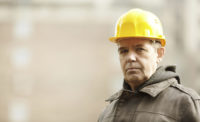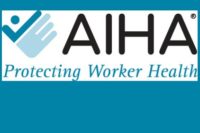2016 marks the 50th anniversary of ISHN — Industrial Safety & Hygiene News. In each issue we’ll devote a 50th anniversary column, “Time Machine.” We’ll talk about how the language, tactics and strategies of safety have changed, and the ways in which they have not. Some challenges confronting programs five decades back are still headaches, and of course new ones have surfaced. The job of safety and health professionals has evolved and expanded; at the same time numerous responsibilities essentially remain the same.
We’re not just going to be looking in the rearview mirror as we mark a half century of publishing ISHN. This milestone is an opportunity to explore scenarios in safety and health that will – or might – unfold in the next 50 years. It might seem like dabbling in science fiction, but time flies. 1967, when what was then Safety Product News first rolled off the presses, still reverberates in the culture. Check out DVDs and vinyl albums on Amazon or at Barnes & Noble.
’67 films include “The Graduate.” Dustin Hoffman is still a presence. Robert Redford starred in “Barefoot in the Park.” James Bond was suave in “You Only Live Twice.” And there’s nothing new about vampire movies, “The Fearless Vampire Killers” was released.
In ’67 The Who, the Rolling Stones, the Beach Boys, Eric Clapton, Neil Young, Bob Dylan and Van Morrison released new albums. They’re all still touring.
The first issue of Rolling Stone came out in October, the same month Safety Product News debuted. Jann Wenner, the co-founder, is still the publisher of RS.
Three Apollo 1 astronauts were killed when fire broke out in their spacecraft during a launch pad test. The supertanker SS Torrey Canyon ran aground off the coast of Britain, causing a major oil spill. The Mideast was at war; Syrian jets were shot down. Tampa, FL police killed an African-American allegedly robbing a store and a riot ensured. U.S. Navy pilot John McCain’s plane went down over North Vietnam and he became a POW.
What we have here is the Baby Boom generation clutching culture by the throat and not letting go. But the Stones can’t tour forever, and the next 50 years will belong to the millennials and the aughts, those born in the “0x” years of this century’s first decade. The U.S. now has 88 million millennials (born 1981-2000).
Futurists predict people will be fluent in every language. Cellphones will speak Swahili. Self-driving cars will be mainstream. Robots will dig ditches and stock shelves. Smart homes will itemize electric, water and gas bills by fixture and appliance. Health checkups will be conducted by cellphone. You’ll fly the friendly skies without a pilot on board. Mars will be colonized. Nanobots will perform medical procedures inside our bodies.
The past is prelude to the future
In safety and health, future shock seems inevitable by taking stock of the changes in the past 50 years:
- In the ’60s, the National Safety Council’s annual National Safety Congress, held every October in the basement of the Conrad Hilton Hotel in Chicago, was simply known as “The Show.” It would be decades before ASSE, AIHA and VPPPA had major exhibitor trade shows.
- Security and fire protection were major issue themes of Safety Product News in 1967.
- A free visual planning kit featured in the magazine wasn’t an iPad, but a fold-out “Rol-A-Chart.”
- “Save the hearing of your employees with anti-noise Swedish wool” read one SPN advertisement from the ’60s.
- ”Your safety man will love it,” proclaimed another ad. Your “safety man” will love what? A non-sparking aluminum gas cylinder. “Be a hero instead of a Nero,” read the ad copy.
- One ad promised, “Wood is Safer! Wherever ordinary work shoes are hazardous, slip on, strap on or lace up Reece Wooden Sole Shoes.”
- Do you recognize these PPE vendors: Willson Products Div., ESB, Inc.; Dockson faceshields; Worklon lab coats, coveralls, shirts and pants; American Allsafe; American Optical Corp., Safety Products Div.; Glendale Optical; Safeline Products; Pittsburgh Glove; ; Thom McAn; Bausch & Lomb?
- 95 percent of advertisements were black and white in the ’60s. Manly men in PPE ads were smoking cigarettes. A PPE cartoon is captioned, “They come in five sizes: small, medium, large, extra-large and tent.”
- Fetching models in mini-skirts and beehive hairdos sold everything but PPE. That was a man’s world.
- An SPN cover story on “audio visuals and safety training” in 1969 played up “videotape – the newest and the best.” One photo was captioned: “Writing on this overhead projector’s built-in transparency roll with a marking pen points out important details.” According to the article, “for instruction and exposition, slides and film strips are thought to do a better job.”
In 1967 when the magazine debuted, OSHA training mandates didn’t exist. It would be three years before President Richard M. Nixon signs into law the Occupational Safety and Health Act. He called it “probably one of the most important pieces of legislation… ever passed by the Congress of the United States.” Not everyone is a believer. Nine months later, the President received a hand-written note from a self-described Nixon booster protesting if Nixon had played any role in OSHA’s creation, “you should be thrown out of office at once.”
The booster turned out to be a prophet, but that’s another story. Look for stories about safety and health’s past, present and future throughout the year, culminating in ISHN’s November issue, which will be all about key players, dates, product innovations and news events of the past 50 years, and a preview of future developments, challenges and leaders in the field.







